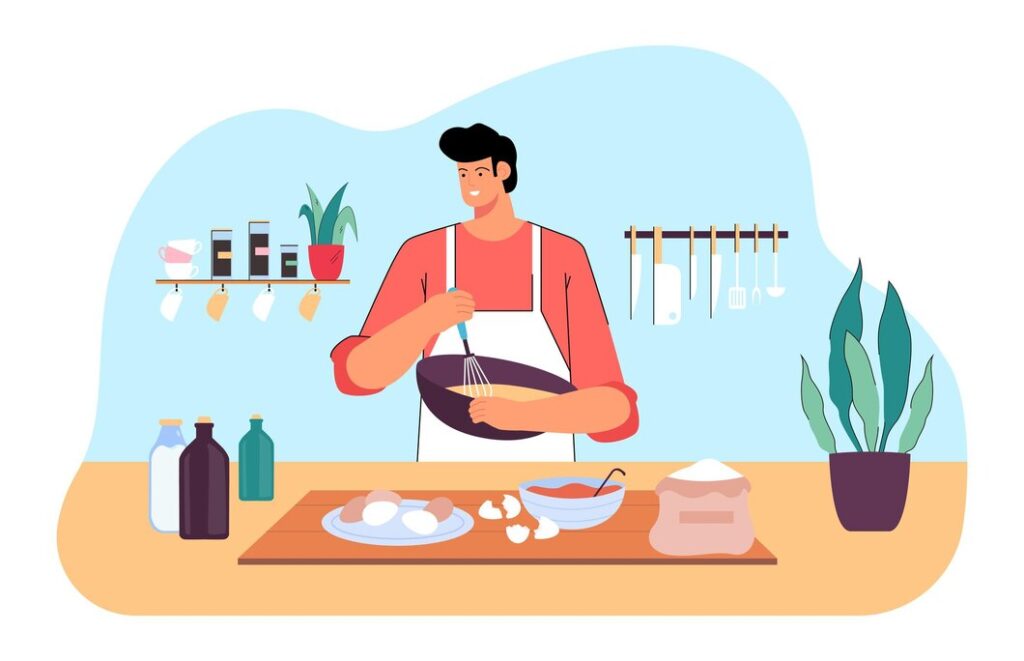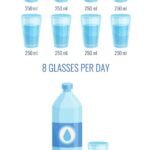Recipe Conversion Calculator
Gram Into Teaspoon, Cups to Tsp, Oz to ml, Cup to Grams
Cooking and baking often require precise measurements to achieve the best results. However, not all recipes use the same measurement units, making conversion skills essential for any home cook. This article provides a comprehensive guide to common kitchen measurement conversions, making it easier to understand and apply these conversions in your culinary endeavors. We’ll also explore how to use a kitchen measurement converter to simplify the process.
Cooking Measurements Converter

INTRODUCTION TO KITCHEN CONVERSIONS
Why Kitchen Unit Conversion Matters More Than You Think
Have you ever followed a recipe only to realize it calls for 1/3 cup, but you only have a tablespoon? Or maybe you’ve found a European baking recipe that measures everything in grams, while your measuring tools are all in cups. Sound familiar?
This is where kitchen unit conversion becomes a game-changer. It bridges the gap between different measurement systems and helps you cook with confidence, no matter where the recipe comes from.
🌎 Recipes Are Global, But Units Aren’t
A quick scroll through your favorite food blog or cookbook might leave you asking:
- “1/3 cup is how many tablespoons?”
- “How many tablespoons are in 3/4 cup?”
- “What’s 120 ml in cups?”
These aren’t just trivia questions—they’re real-time kitchen dilemmas. Recipes from the U.S. often use cups and tablespoons, while others go by grams and milliliters. This mismatch can make even the simplest dish feel overwhelming.
🧁 Baking = Science (So Precision = Success)
When baking, precision isn’t optional—it’s essential. If a cake recipe calls for 375 grams of flour, guessing with a cup can throw the whole thing off. Similarly, converting 12 tbsp to cups or 16 tbsp to cups without knowing the right ratio might change texture, flavor, or rise. Try our pizza calculator to find perfect timings for pizza baking
That’s why understanding conversions like:
- 500 ml to oz
- 1 cup to grams
- Cups to tsp
- Grams into teaspoons
…isn’t just nice—it’s necessary.
🔄 Unlock Flexibility in Any Kitchen
Knowing these conversions means:
- You’re not limited by a region’s recipe style
- You can scale dishes up or down with ease
- You make ingredient substitutions without second-guessing
No more Googling “32 oz to ml” mid-cooking or wondering if “0.04 cup is how many oz?” With the right knowledge—or a simple tool like the Recipians kitchen converter—you’ll always be on point.
Want Perfect Recipes Every Time? Recipient Have Everything You Need!
Are you tired of the guesswork in the kitchen? Say goodbye to inconsistent results and hello to perfectly measured, delicious meals every time with Recipians. Whether you’re a novice cook or a seasoned pro, Recipians provides all the tools you need to take your cooking to the next level. From precise conversions of ingredients to detailed recipe suggestions based on your preferences, we’ve got you covered. With Recipians, you get more than just accurate conversions – you’ll also have access to personalized meal plans, nutritional trackers, and even a community of food lovers ready to share tips, tricks, and inspiration. Not to mention, our app helps you save time with efficient meal prep guides and tips for healthy eating.
Cups, Tablespoons, Teaspoons, Grams, Milliliters & More
Most Common Kitchen Unit Conversions
🧁 1 Cup to Grams: Why It’s Not Always the Same
1 cup ≠ one fixed weight in grams. It depends on what you’re measuring. Here’s a handy chart for common ingredients:
| Ingredient | 1 Cup (US) = Grams |
|---|---|
| All-purpose flour | 120 g |
| Sugar (granulated) | 200 g |
| Butter | 227 g |
| Honey | 340 g |
| Milk | 240 g |
| Water | 237 g |
| Oats (rolled) | 90 g |
| Cocoa powder | 100 g |
This is why when people search for “1 cup gm”, they get different answers — it’s all about density. When baking, it’s best to use a digital scale if you’re working with grams.
🍴 1/3 Cup = How Many Tablespoons? (& Other Common Cup-to-Tablespoon FAQs)
Cup to tablespoon conversions are straightforward once you know the math:
- 1 cup = 16 tablespoons
- 3/4 cup = 12 tablespoons
- 1/3 cup = 5 tablespoons + 1 teaspoon
- 1/4 cup = 4 tablespoons
So, “1/3 cup how many tablespoons” or “1/3 cup how many tbsp”? Answer: 5 tbsp + 1 tsp.
Other common conversions:
| Measurement | Tablespoons (tbsp) |
|---|---|
| 12 tbsp | ¾ cup |
| 16 tbsp | 1 cup |
| 20 tbsp | 1 ¼ cup |
| 9 tbsp | 9/16 cup (just over ½ cup) |
🥄 Teaspoon to Tablespoon & Cup in Teaspoons
Quick reference:
- 1 tablespoon = 3 teaspoons
- 1 cup = 48 teaspoons
- 1/2 cup = 24 teaspoons
- 1/4 cup = 12 teaspoons
If you’re wondering how many teaspoons in a cup, just multiply the tablespoons by 3 or directly use the values above. These help when scaling recipes or adjusting spice levels.
🧪 Milliliters (ml) to Ounces (oz) and Vice Versa
When dealing with liquids, volume measurements like ml and oz are critical. Here’s how you convert:
- 1 oz = 29.5735 ml
- 1 ml = 0.033814 oz
- 500 ml in oz = 16.91 oz
- 32 oz to ml = 946 ml
- 0.04 cup to oz = 0.32 oz
- 120 ml to cups = ~½ cup
These values are often searched when working with both metric and imperial recipes. A good digital kitchen scale with a fluid-ounce mode makes this easier.
📏 Tablespoon to Cups (tbsp to cups)
Here are quick conversions for tablespoons to cups:
| Tablespoons (tbsp) | Cups (US) |
|---|---|
| 12 tbsp | ¾ cup |
| 16 tbsp | 1 cup |
| 20 tbsp | 1 ¼ cup |
| 9 tbsp | 9/16 cup |
Knowing how to convert tablespoons into cups helps in scaling up or down recipe servings accurately, especially for sauces and liquids.
📐 Cups to Teaspoons & Gram into Teaspoon
Some ingredients are better measured in teaspoons due to their small quantities:
- 1 cup = 48 teaspoons
- 1 tablespoon = 3 teaspoons
For powdered or granular substances, here’s an example conversion of grams into teaspoons:
| Ingredient | 1 tsp = grams |
|---|---|
| Salt | 5.69 g |
| Sugar (white) | 4.2 g |
| Baking powder | 4.6 g |
| Ground cinnamon | 2.6 g |
So, when asking “gram into teaspoon”, always specify the ingredient.
🧯375 Grams to Cups – Ingredient Matters
There’s no fixed answer to “375 grams to cups”, because it varies based on what you’re measuring:
| Ingredient | Cups for 375 g |
|---|---|
| Sugar (granulated) | ~1.9 cups |
| Flour | ~3.1 cups |
| Butter | ~1.65 cups |
| Milk | ~1.6 cups |
Use a chart or digital scale for best accuracy when converting grams to cups.
🔄 Kitchen Conversion Quick Reference Table
| Unit A | Conversion | Unit B |
|---|---|---|
| 1 cup | 16 tbsp | Tablespoons |
| 1 tbsp | 3 tsp | Teaspoons |
| 1 cup | 48 tsp | Teaspoons |
| 1 oz | 29.5735 ml | Milliliters |
| 1 ml | 0.033814 oz | Ounces (fluid) |
| 1 tbsp (US) | ~14.79 ml | Milliliters |
| 1 cup (US) | 236.588 ml | Milliliters |
| 500 ml | 16.91 oz | Ounces (fluid) |
| 32 oz | ~946 ml | Milliliters |
COOK SMARTER, NOT HARDER
Pro Tips for Perfect Conversions
Accurate kitchen conversions are more than just knowing the numbers — they require the right tools, techniques, and a bit of common sense. Here are essential tips that will help you master every recipe, especially when switching between grams, cups, tablespoons, milliliters, or ounces.
🧂 1. Use Different Tools for Wet and Dry Ingredients
A common mistake many home cooks make is using the same measuring cup for everything. But the reality is:
✅ Dry measuring cups are meant to be filled to the top and leveled.
✅ Liquid measuring cups have a spout and extra room to avoid spilling — so you measure at eye level.
Why it matters:
Dry ingredients like flour or sugar, when packed too tightly, can throw off a recipe by 10–20%. And if you’re measuring liquids in a dry cup, you may be under-measuring without realizing it. Especially when converting from cups to grams or ml to oz, these small missteps can greatly impact consistency.
✨ 2. Always Level Your Dry Ingredients
Whether it’s flour, cocoa, or baking soda, always level it off using the back of a knife. Don’t shake or compact it. This is especially important when:
- Converting grams into teaspoons (density matters!)
- Adjusting small quantities like 9 tablespoons to cups or 1/3 cup how many tablespoons
Small errors compound fast in baking — and could ruin texture or flavor.
⚖️ 3. Digital Scale vs Measuring Cups: When to Use What
Digital scales are ideal when recipes mention grams, milliliters, or ounces (especially in metric baking).
Measuring cups/spoons are handy for U.S. recipes or quick home cooking.
| Use a Scale When: | Use Cups/Spoons When: |
|---|---|
| You need exact weight (e.g., 120g flour) | You’re following casual recipes |
| Cooking with international recipes | Measuring common U.S. ingredients |
| Dealing with dense/sticky ingredients | Making sauces, spice blends, or drinks |
Also helpful: Use a scale for recipes that involve 375 grams to cups or 1 cup gm conversions, so you don’t rely on vague volume measures.
👀 4. Watch Eye-Level Measurements
When using a liquid measuring cup, always place it on a flat surface and check the mark at eye level — not from above. This is crucial when converting:
- 500 ml in oz
- 32 oz to ml
- 0.04 cup to oz
Even being a little off can impact the final outcome, especially with baking or delicate sauces.
📝 5. Don’t Mix U.S., U.K., and Metric Units
Did you know:
- 1 U.S. cup = 236.588 ml
- 1 U.K. cup = 284 ml
- 1 U.S. tablespoon = 14.8 ml
- 1 U.K. tablespoon = 15 ml
If you’re converting something like 120 ml to cups or 20 tbsp to cups, make sure you’re referencing the correct system, or you may end up with too much or too little.
🧮 6. Print or Bookmark a Conversion Chart
Having a ready-to-go table for common conversions can be a lifesaver when you’re deep in a recipe. You’ll quickly resolve questions like:
- “1 cup in teaspoons?” (Answer: 48)
- “How many tablespoons in 3/4 cup?” (Answer: 12)
- “375 grams to cups?” (depends on the ingredient!)
Stick one on your fridge or save a PDF on your phone!
Conclusion
Understanding and mastering kitchen measurement conversions is essential for any home cook. Whether you’re scaling a recipe or converting between metric and imperial units, these conversions can make the process more straightforward and enjoyable. By utilizing tools like the Kitchen Measurement Converter, you can ensure accuracy and confidence in your culinary creations.
Whether you’re a seasoned chef or a beginner in the kitchen, this guide to kitchen measurement conversions will help you navigate recipes with ease and precision. Happy cooking!





